White tip silver needle tea, which is usually known by its short name, Silver Needle white tea, or in some places, White Tip, is very high quality premium white tea. Silver Needle tea is the highest quality white tea available, and it is famous throughout the world for its impeccable flavor and aromatic fragrance. Silver Needle tea is produced by picking the large leaf tea trees' buds to create this beautiful white tea.
The Origin of Silver Needle White Tea
White Tip is produced in Fujian, Fuding and in Zhenghe, China. The White Tip which is produced in Fuding is also called “The North Road Silver Needle Tea”, while the White Tip produced in Zhenghe is called “The South Road Silver Needle Tea”. The North Road Silver Needle tea is much brighter than the South Road Silver Needle tea.
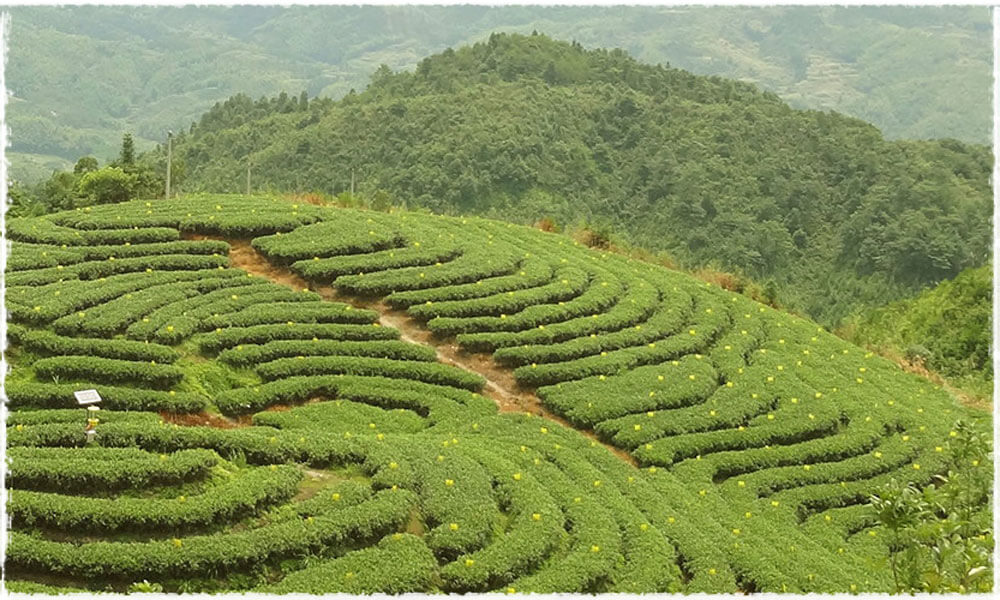
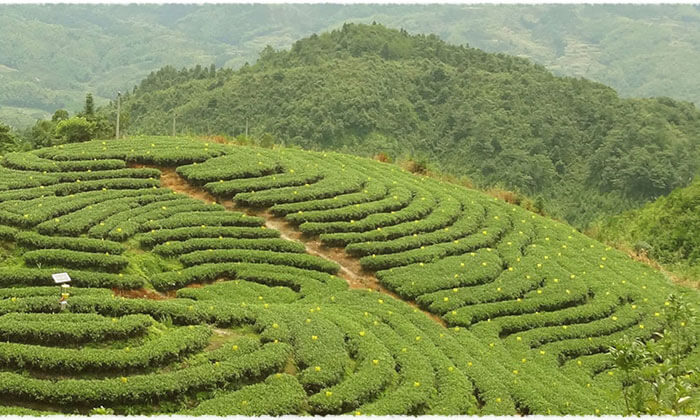
How to Properly Brew Silver Needle White Tea
To properly brew your White Tip, you should ideally use 2-3 teaspoons of dried White Tip leaves for 8oz of water. Brew the it in water heated to 176 ºF (80 ºC) for 1 to 2 minutes. For a stronger flavor, you can brew your Silver Needle tea for up to five minutes. Because White Tip is such a delicate and fragile tea, it is extremely important that you keep the brewing temperature low, and well below the boiling point. If you use too hot of water, you will scorch the white tea leaves and it will remove beneficial nutrients, and result in a bitter and undrinkable brew. To learn more about properly brewing it, please read our exclusive Teavivre article, Guide To Brewing Silver Needle White Tea Properly.

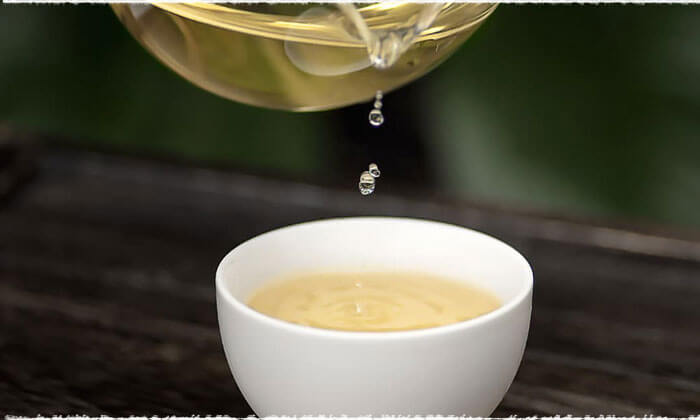
The Flavor of Silver Needle White Tea
When brewed properly, the resulting liquor of the Silver Needle tea will be a bright clear apricot color with a strong fresh and aromatic aroma that has delightful floral nuances. The resulting flavor is very smooth and mellow with no astringency or sharpness, and a lightly sweet floral aftertaste. It is an exquisite flavor that is unique to White Tip, which is what makes Silver Needle tea such a highly regarded tea.
How to Properly Store Silver Needle White Tea
Much like Pu-erh tea, aged White Tip is considered of higher quality than fresh White Tip, and is also much more expensive. For that reason, it is extremely important that you take great care in proper storage of your White Tip. Be sure to store your tea in an airtight, opaque container where it cannot absorb any odor, moisture or air, and keep it away from heat and sunlight exposure as well, as all of these things can quickly degrade the quality of your teas. Learn how to choose the highest quality aged White Tip by reading our article How To Choose The Best Silver Needle White Tea.

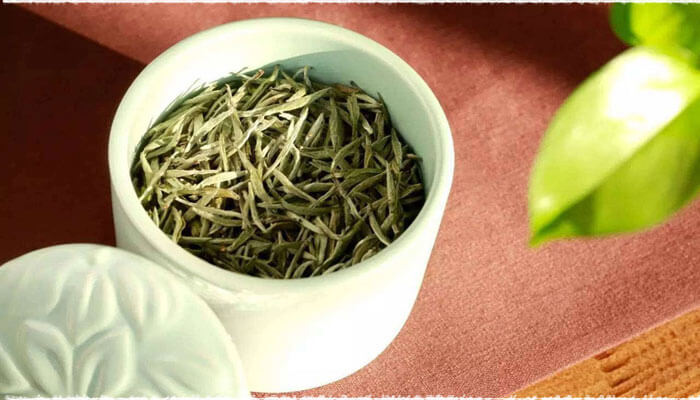
The Beneficial Health Effects of Silver Needle White Tea
White Tip has more tea polyphenols and amino acids than almost any other tea in the world. Therefore, White Tip is extremely beneficial to your health, because of its high anti-oxidant content, which is said to help prevent cancer and help to remove toxins from the body, and is also said to be beneficial in the treatment of measles. For more detailed health information on the benefits of White Tip, please read the following scientific articles:
https://www.sciencedirect.com/science/article/pii/S0944711311002315
https://www.sciencedirect.com/science/article/pii/S096399691000147X
How Silver Needle White Tea is Produced
Silver Needle tea is produced by picking the strongest, fattest buds from the tea trees early in springtime. The requirements for picking White Tip are very strict, and the tea pickers pluck the leaves with the utmost care and attention to detail. White Tip cannot be picked on rainy days, only on days which are dry and clear. Thin or purple colored buds will not be picked either. Likewise, buds which have been damaged by nature, insects or people will not be selected for processing. The buds which are hollow or sickly cannot be plucked. These are the famous “ten rules of picking” in the production of White Tip, which shows how selective the picking process is for this fine quality white tea. White Tip is not fried, but instead withered “outside of the house”, then “inside of the house” then dried using a two-part process. Because of the intricate nature of producing the highest quality White Tip, only the finest tea farmers and tea companies, such as Teavivre, can produce the most exquisite White Tip.
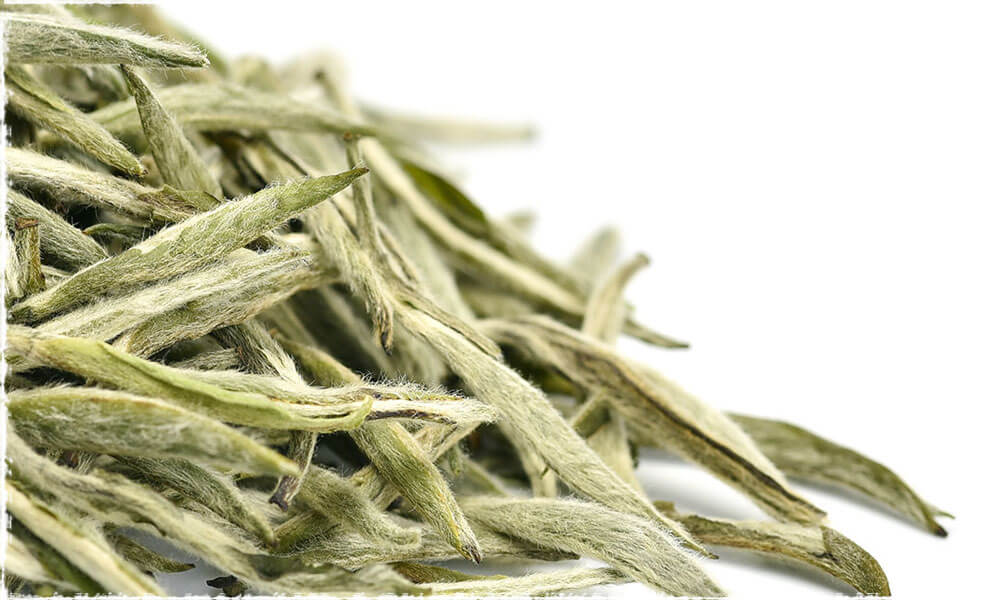
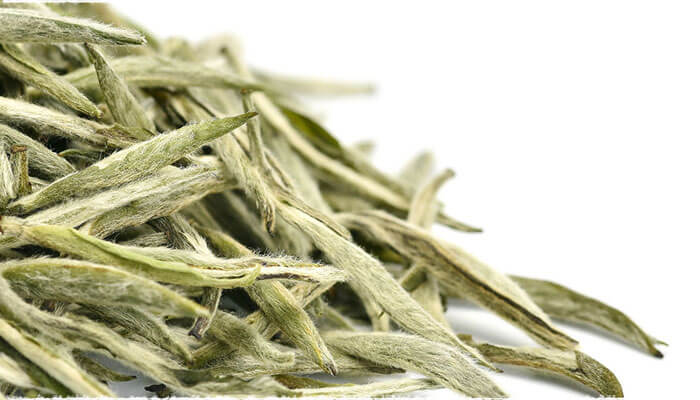
The History of Silver Needle White Tea
The birthplace of Silver Needle white tea – famed for its white pekoe covering – is in the area nearby Taimushan Mountain in Fujian, China. White Tip was very rare during the reign of Emperor Jiaqing in the late 1700s, created only from the small buds of the local varieties of tea trees. When the Fuding variety of the tea tree was discovered in 1857, it drove White Tip into popularity and high regard, because the buds of the Fuding variety of tea tree are much larger and fatter with a much richer coating of pekoe and a more delicious and enticing flavor and fragrance. In the late 1890s, Emperor Guangxu began the export of White Tip to foreign countries, so that in the early 1900s the popularity of White Tip grew rapidly overseas, and became a highly desired rare and exotic type of white tea. In Europe, it is common to blend White Tip with black tea. It is considered more beautiful and rare to serve it in that manner in European countries, while in other places in the world, Silver Needle tea is enjoyed imply on its own because of its own beauty and alluring flavor and aroma. To learn more about the history of white tea, including Silver Needle white tea, please read our article, White Tea History.
 Exploring the Charms of 2024 Spring Tea Garden with Angel
Exploring the Charms of 2024 Spring Tea Garden with Angel Yingde Black Tea
Yingde Black Tea Matcha vs. Green Tea Powder
Matcha vs. Green Tea Powder
